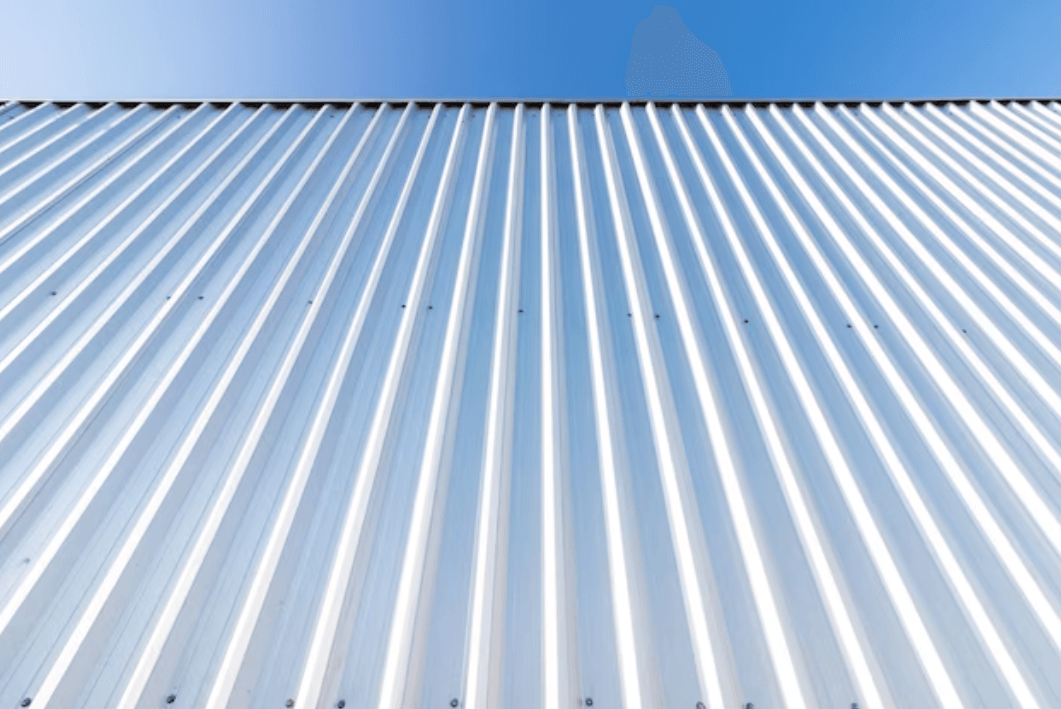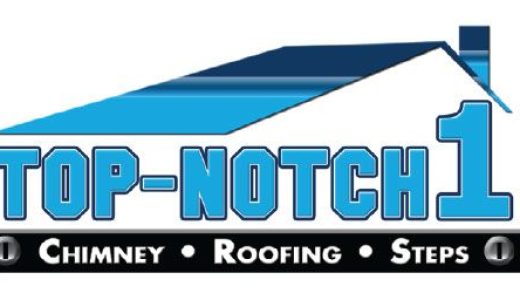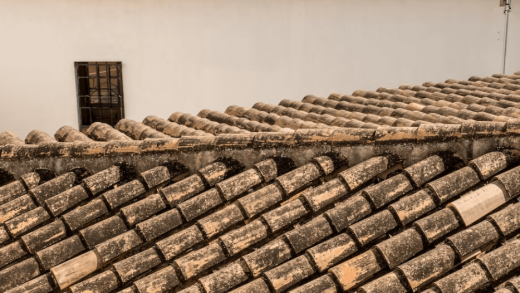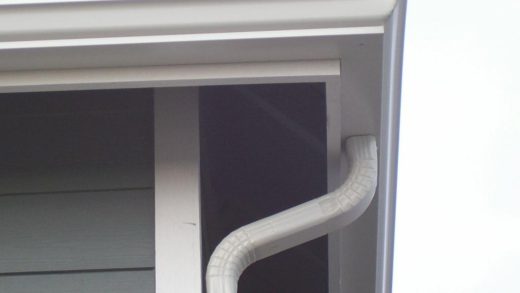Metal Roofing – From Panels to Premium Tiles
Are you tired of constantly having to repair or replace your old roof? Consider upgrading to metal roofing! Not only does it offer longevity and durability, but it also comes in a variety of types and materials. From sleek metal panels to premium tiles that mimic the look of traditional roofing materials, there’s an option for every home style. In this blog post, we’ll explore the benefits of metal roofing, various types and materials available, installation and maintenance tips, cost considerations, misconceptions about metal roofing, how to select the right one for your home, and where to purchase quality materials. Let’s dive into the world of metal roofing!
The Benefits of Metal Roofing

Metal roofing has become increasingly popular in recent years due to its numerous benefits. One of the biggest advantages is its longevity and durability. Unlike other roofing materials, metal won’t crack, warp, or rot, making it a great investment for homeowners.
Another benefit of metal roofing is that it’s low-maintenance. Metal roofs require very little upkeep compared to traditional shingle roofs. They’re resistant to mold, mildew, and pests, which means they don’t need frequent cleaning or repairs.
Metal roofing also provides excellent energy efficiency by reflecting the sun’s heat away from your home during hot summer months. This can help reduce cooling costs and keep your home comfortable year-round.
In addition to being functional, metal roofs are also aesthetically pleasing with a variety of styles and colors available on the market today. From sleek panels to premium tiles that mimic slate or wood shakes, there’s an option for every homeowner’s taste.
Investing in a metal roof may increase the value of your home as it’s considered a long-lasting and durable upgrade by potential buyers. Choosing a metal roof offers many benefits worth considering when deciding on your next roofing material.
Longevity and Durability
When it comes to roofing, longevity and durability are two of the most crucial factors homeowners consider. Metal roofing has become a popular choice because of its long-lasting life span. Unlike other types of materials such as asphalt shingles that need replacement every 15-20 years or so, metal roofs can last up to 50 years or more with proper maintenance.
Metal roofs are known for their extreme durability and resistance against harsh weather conditions like heavy rains, strong winds, hailstorms, and even wildfires. They can withstand wind gusts up to 140 miles per hour and have a Class A fire rating. This makes them an ideal option for homeowners living in areas prone to natural disasters.
Another great thing about metal roofs is that they don’t require much maintenance. You won’t have to worry about rotting or warping like you would with wood shakes or shingles. Additionally, metal doesn’t attract insects or mold growth, which helps ensure your roof stays clean and healthy throughout its lifespan.
Investing in a metal roof means investing in a durable and long-lasting solution that will save you money on repairs and replacements down the line while providing peace of mind knowing your home is protected from Mother Nature’s wrath!
Types of Metal Roofing
Metal roofing is a popular choice for homeowners due to its durability, longevity, and energy efficiency. When it comes to selecting the right type of metal roofing for your home, there are several options available.
Metal Panels
Metal panels are one of the most common types of metal roofing materials, consisting of large sheets or panels that overlap to create a watertight seal. These panels can be made from a variety of metals, including steel and aluminum.
One major benefit of metal panels is their affordability compared to other metal roofing options. They also come in a wide range of colors and finishes to match any style preferences.
When it comes to installation, metal panels are relatively quick and easy to install, especially for experienced professionals. However, it’s important that they are installed correctly with proper seals and fasteners to prevent leaks.
While not as visually appealing as some other metal roofing options like shingles or tiles, metal panels still offer excellent durability and longevity when properly maintained. Regular cleaning and inspections can help ensure their continued performance over time.
Standing Seam Systems
Standing seam systems are a popular choice for metal roofing due to their sleek and modern appearance. This type of metal roofing consists of interlocking panels that run vertically along the roof’s slope. The seams between each panel are raised, creating a distinctive look.
One benefit of standing seam systems is their durability. They can withstand harsh weather conditions such as heavy rain, snow, and wind without sustaining damage. Additionally, they require minimal maintenance compared to other roofing materials.
Another advantage of standing seam systems is their energy efficiency. The vertical orientation of the panels allows for natural ventilation under the roof, which helps regulate temperature and reduce energy costs.
Standing seam systems come in various materials including steel, aluminum, copper, and zinc. Each material has its unique features such as color options or resistance to corrosion.
Installation of standing seam systems requires precision and expertise from professional installers to ensure proper alignment and sealing at all seams. However, once installed correctly, they provide an attractive finish that can last up to 50 years with little maintenance required.
Metal Shingles
Metal shingles are an increasingly popular option for homeowners looking to upgrade their roofing. These shingles provide a sleek and modern look while still offering all of the benefits of metal roofing.
One major advantage of metal shingles is their durability. They can withstand extreme weather conditions such as heavy rain, hailstorms, and even high winds without sustaining damage. This means that once you install them, you won’t have to worry about frequent repairs or replacements.
Another benefit is energy efficiency. Metal shingles reflect sunlight instead of absorbing it, helping to keep your home cool during hot summer months and reducing your cooling costs.
Metal shingle roofs also come in a range of colors and styles, allowing you to choose an option that complements your home’s architectural style. Some manufacturers even offer custom options for those who want something truly unique.
If you’re looking for a long-lasting, environmentally friendly roofing solution with plenty of style options available, metal shingles may be just what you need!
Premium Metal Tiles
Premium metal tiles are an excellent option for homeowners who want the durability and longevity of metal roofing but prefer a more traditional look. These tiles come in a variety of styles, including slate and wood shake, and they can be coated with various colors to match any home’s aesthetic.
One major benefit of premium metal tiles is their resistance to weathering. They can withstand harsh elements such as hail, wind, rain, snow, and extreme temperatures without losing their shape or color. This makes them ideal for homes located in areas prone to severe weather.
Another advantage of premium metal tiles is that they require minimal maintenance compared to other roofing materials like asphalt shingles. Metal roofs don’t need regular cleaning or repairs because they don’t rot or decay over time.
Moreover, these sleek-looking roof coverings are energy efficient as they reflect solar heat away from your home instead of absorbing it like asphalt shingles do. This means you’ll save money on cooling costs during hot summer months while keeping your living spaces comfortable.
Investing in premium metal tiles is an excellent long-term investment for homeowners looking for durability coupled with style. The benefits include resistance to harsh weather conditions, low maintenance needs while being energy efficient – making them eco-friendly options that will last many years into the future.
Materials used in Metal Roofing
Metal roofing is available in a variety of materials, each with its own unique advantages and drawbacks. Steel roofing is the most popular option due to its affordable cost and durability. It can also be coated with different finishes to prevent corrosion and enhance aesthetics.
Aluminum roofing, on the other hand, is more expensive than steel but is lightweight and resistant to corrosion. It’s an excellent choice for coastal areas where saltwater exposure can damage traditional metal roofs.
Copper roofing has been used for centuries because of its beauty and longevity. Over time, it develops a natural patina that adds character to any home. However, copper is one of the most expensive metal roofing options available.
Zinc roofing offers a sleek appearance that improves over time as it develops a protective layer called “patina.” Zinc roof panels are durable yet malleable enough to fit into tight spaces without cracking or breaking.
Ultimately, choosing the right material for your metal roof will depend on several factors such as budget, climate conditions in your area, desired aesthetic appeal, among others. Consider all these factors before making a final decision!
Steel Roofing
Steel roofing is one of the most popular types of metal roofing due to its affordability and durability. It has been used for decades in industrial, commercial, and residential settings. Steel roofs are made from galvanized steel which is coated with a layer of zinc to prevent corrosion.
One advantage of steel roofing is that it can be easily installed on any type of roof structure. Its lightweight construction means it doesn’t add extra weight onto your home’s foundation, making it an ideal choice for homes located in areas prone to earthquakes or heavy snowfall.
Steel roofs also come in a range of colors and finishes, giving homeowners plenty of options when choosing their desired look. They require very little maintenance once installed and can last up to 50 years or more if properly cared for.
Another benefit is that they are energy efficient due to their reflective properties, which help keep homes cool during the summer months, reducing cooling costs. Steel roofing offers excellent value for money as well as being eco-friendly thanks to its recyclable nature at the end of its lifespan.
Aluminum Roofing
Aluminum roofing is one of the most popular types of metal roofing available on the market today. It’s lightweight, durable, and has a long lifespan that can last up to 50 years with proper maintenance.
One of the biggest benefits of aluminum roofing is its resistance to corrosion and rusting. This makes it an excellent choice for areas with high humidity or saltwater exposure such as coastal regions.
Another benefit of aluminum roofing is its energy efficiency. Due to its reflective properties, it can reflect heat away from your home, reducing cooling costs during hot weather.
Aluminum roofs come in a variety of styles including shingles, panels, and standing seam systems, providing homeowners with more design options when compared to other metal roof materials.
Installation of an aluminum roof requires special care because it expands more than other metals due to temperature fluctuations, which could cause issues like warping if not installed correctly by experts. However, once installed properly, they require low maintenance, making them a great investment for any homeowner looking for durability and longevity in their roof system.
Copper Roofing
Copper roofing is one of the most visually appealing metal roofing materials on the market. Its natural beauty gives it a unique look, and over time, copper develops an attractive patina that adds character to your home’s exterior.
In addition to its aesthetic appeal, copper is also highly durable and long-lasting. It can withstand extreme weather conditions such as heavy rain, strong winds, hailstorms, and even fire. Copper roofing is also resistant to corrosion caused by saltwater exposure or acid rain.
Another benefit of using copper for your roof is its eco-friendliness. Copper is a sustainable material, which means that it can be recycled without losing its quality. Moreover, choosing copper for your roof will reduce your carbon footprint since you won’t have to replace it frequently like other roofing materials.
However, there are some downsides to using copper as well. One major disadvantage of copper roofs is their cost; they’re more expensive than other metal roofs because of the high cost of raw materials and labor-intensive installation process required.
If you want a beautiful and durable roof that lasts for decades while contributing positively towards environmental sustainability efforts, then investing in a high-quality copper roof may be worth considering!
Zinc Roofing
Zinc roofing is becoming increasingly popular in the world of metal roofing. It has a unique aesthetic and offers great durability and longevity.
One benefit of zinc roofing is that it naturally resists corrosion, making it ideal for areas with high humidity or saltwater exposure. This means that your roof will stay looking like new for years to come.
Another advantage of zinc roofing is its low maintenance requirements. Zinc roofs are easy to clean and require minimal upkeep compared to other materials such as asphalt shingles or wood shakes.
Zinc also has a relatively low melting point, which makes it easier to work with during installation. This means that contractors can quickly install your roof without causing damage to the material.
In terms of cost, zinc roofing may be more expensive than other options upfront but can save you money in the long run due to its durability and low maintenance needs.
If you’re looking for a unique yet durable option for your metal roof, consider choosing zinc.
Installation of Metal Roofs
Installing a metal roof is not an easy task and requires professional expertise. Before starting the installation process, it’s essential to ensure that your roof deck is in good condition. If there are any issues with the decking, they should be addressed before installing metal roofing.
After ensuring that the decking is sound, install underlayment on top of it. Next, start installing the vertical panels or standing seam system from one side of the roof to another. Always follow manufacturer instructions for proper installation techniques, including fastening methods and spacing requirements.
When installing metal shingles or premium tiles, begin by installing starter strips along the eaves of your roofline. These starter strips provide a secure base for individual shingle pieces or tiles to adhere to.
Finishing touches like ridge caps and flashing can help prevent water intrusion at vulnerable areas such as valleys and hips. It’s important to hire professionals who have experience working with these materials so you can be confident in their workmanship.
After completing all installations properly according to manufacturer instructions, it becomes important to inspect everything thoroughly before signing off on the final payment for services rendered by contractors.
Care and Maintenance of Metal Roofs
Proper care and maintenance of your metal roof can help extend its lifespan and ensure it continues to look great for years to come. Here are some tips on how to take care of your metal roof.
Firstly, keep an eye out for any debris that may accumulate on the roof such as leaves or branches. These items can trap moisture against the metal surface, leading to rusting or corrosion over time.
Secondly, regularly inspect your gutters and downspouts for any clogs or blockages. This is important in preventing water buildup that could cause damage to your roof’s structural integrity.
Thirdly, avoid walking directly on the metal panels of your roof as this can cause dents or scratches, which could lead to further damage over time.
Consider hiring a professional roofing contractor for regular inspections and maintenance checks. They will be able to identify potential issues early on before they become major problems.
By following these simple steps, you’ll be able to maintain the longevity and durability of your metal roof while keeping it looking great!
Cost Considerations for Metal Roofing
When it comes to choosing the right roofing material for your home, cost is always an important consideration. Metal roofing can be a more expensive option compared to traditional asphalt shingles or other options, but the long-term benefits and durability of metal roofs often outweigh the initial costs.
The price of metal roofing can vary depending on factors such as the type of metal used, thickness and quality of materials, size and complexity of your roof structure, and installation costs. However, in general, homeowners should expect to pay between $5 to $12 per square foot for a new metal roof installation.
It’s important to keep in mind that while upfront costs may be higher for metal roofing, this type of investment typically pays off over time with lower maintenance requirements and a longer lifespan than other types of roofs. Additionally, many insurance companies offer discounts for homes with durable metal roofs due to their resistance against weather damage.
While cost is certainly an important factor when considering a new roof installation or replacement project, it’s crucial not to sacrifice quality or durability for short-term savings. Investing in high-quality materials like copper or zinc may initially require a higher financial investment but provide excellent protection from harsh environmental conditions while adding value over time.
Metal Roofing vs Other Roofing Materials
When it comes to roofing materials, metal roofing is often compared to other popular options such as asphalt shingles and clay tiles. While each material has its own advantages and disadvantages, metal roofing stands out in several areas.
Firstly, metal roofs have a longer lifespan than most other types of roofing materials. They can last up to 50 years or even more with proper maintenance, while traditional asphalt shingle roofs only have a lifespan of about 20-30 years.
Metal roofs are also much more durable than other materials. They can withstand harsh weather conditions like heavy rain, hailstorms, and strong winds without getting damaged. In contrast, asphalt shingle roofs may suffer from cracking or chipping due to extreme temperature changes.
Moreover, metal roofs are fire-resistant, which makes them an ideal choice for homeowners who live in wildfire-prone areas. Other common roofing materials like wood shakes or asphalt shingles pose a significant fire hazard since they are highly flammable.
Finally, when comparing the cost of installation and maintenance over their lifetime instead of just upfront costs, metal roofs reveal themselves to be very competitive versus traditional roofing alternatives.
Overcoming Common Misconceptions About Metal Roofing
There are several misconceptions that surround metal roofing, and these can be a hindrance to homeowners who may consider this option. Some believe that metal roofs are noisy during rainstorms, while others think they get too hot in the summer. To overcome these misconceptions and understand the benefits of metal roofing, it is essential to know the facts.
Firstly, contrary to popular belief, metal roofs do not make more noise than any other type of roof during rainstorms. Proper installation with underlayment materials ensures that sound is reduced significantly.
Secondly, many people assume that since metal conducts heat easily, it gets too hot in summers. However, this isn’t necessarily true either because modern technology allows for reflective coatings on metals, which reflect sunlight away from your home, thus keeping your house cooler even in extreme summer temperatures.
Another myth surrounding metal roofing concerns lightning strikes. Although metallic materials conduct electricity better than non-metallic ones, they will not attract lightning strikes any more than other types of roofs such as asphalt shingles or tiles commonly used across households without conducting electricity.
Additionally, some people believe that installing a new roof requires excessive labor costs and time-consuming procedures. However, with advancements in technology, today’s professional installers have made significant strides towards minimizing disruptions and costs associated with traditional installations, maximizing efficiency while maintaining quality workmanship, ultimately benefiting customers long-term!
In conclusion, by understanding and debunking common myths about Metal Roofs, you can make an informed decision regarding whether or not this option is right for you!
Selecting the Right Metal Roofing for Your Home
Selecting the right metal roofing for your home can be a daunting task. With so many options available, it’s important to consider factors such as durability, aesthetics, and cost. One of the first things to consider is the type of metal roofing you want for your home.
Metal panels are a popular choice due to their affordability and ease of installation. Standing seam systems provide a sleek and modern look that works well on contemporary homes. Metal shingles offer a classic look that mimics traditional roofing materials like asphalt or wood shakes.
Another factor to consider when selecting metal roofing is the material used. Steel roofing is one of the most common options due to its strength and affordability. Aluminum roofing offers similar benefits but with added resistance to corrosion. Copper and zinc roofs are more expensive but provide unique aesthetic appeal and longevity.
When choosing your metal roof, it’s also important to think about color options as well as energy efficiency ratings. Some metal roofs come coated with reflective paint or coatings, which can help reduce cooling costs during hot summer months.
Ultimately, selecting the right metal roof involves weighing various factors, including budget, aesthetic preferences, durability requirements, local climate considerations, among others, in order to make an informed decision that will serve you best for years down the line.
Where to Purchase Quality Metal Roofing Materials
When it comes to purchasing quality metal roofing materials, there are a few options available. One option is to purchase from your local home improvement store or roofing supplier. These stores typically carry a variety of metal roofing products, including panels, shingles, and tiles.
Another option is to purchase directly from the manufacturer. This can often provide better pricing and more customized options for your specific needs.
You may also consider purchasing through an online retailer that specializes in metal roofing materials. This can offer convenience and access to a wider range of products than you may find locally.
It’s important when purchasing metal roofing materials to do your research and ensure you’re getting high-quality products that meet industry standards. Look for manufacturers with good reputations, warranties on their products, and certifications such as UL listings or Energy Star ratings.
Ultimately, where you choose to purchase your metal roofing materials will depend on factors such as availability, price point, and personal preference.
Conclusion
Metal roofing is an excellent option for homeowners who are looking for a durable and long-lasting roofing material that offers numerous benefits.
From its durability and longevity to its energy efficiency and low maintenance, metal roofing provides many advantages over other types of roofs.
When it comes to selecting the right type of metal roof for your home, consider factors such as your budget, style preferences, climate conditions in your area, and the materials used in the manufacturing process.
If you’re interested in purchasing quality metal roofing materials or need help choosing the perfect style to fit your needs, be sure to consult with experienced professionals who can provide expert advice on everything from installation techniques to care and maintenance practices.
Investing in a high-quality metal roof can offer significant benefits that will pay off in both the short-term and long-term. Whether you’re considering installing a new roof or replacing an old one, explore all of your options carefully before making any decisions – after all, a good roof is an investment that should last for decades!



